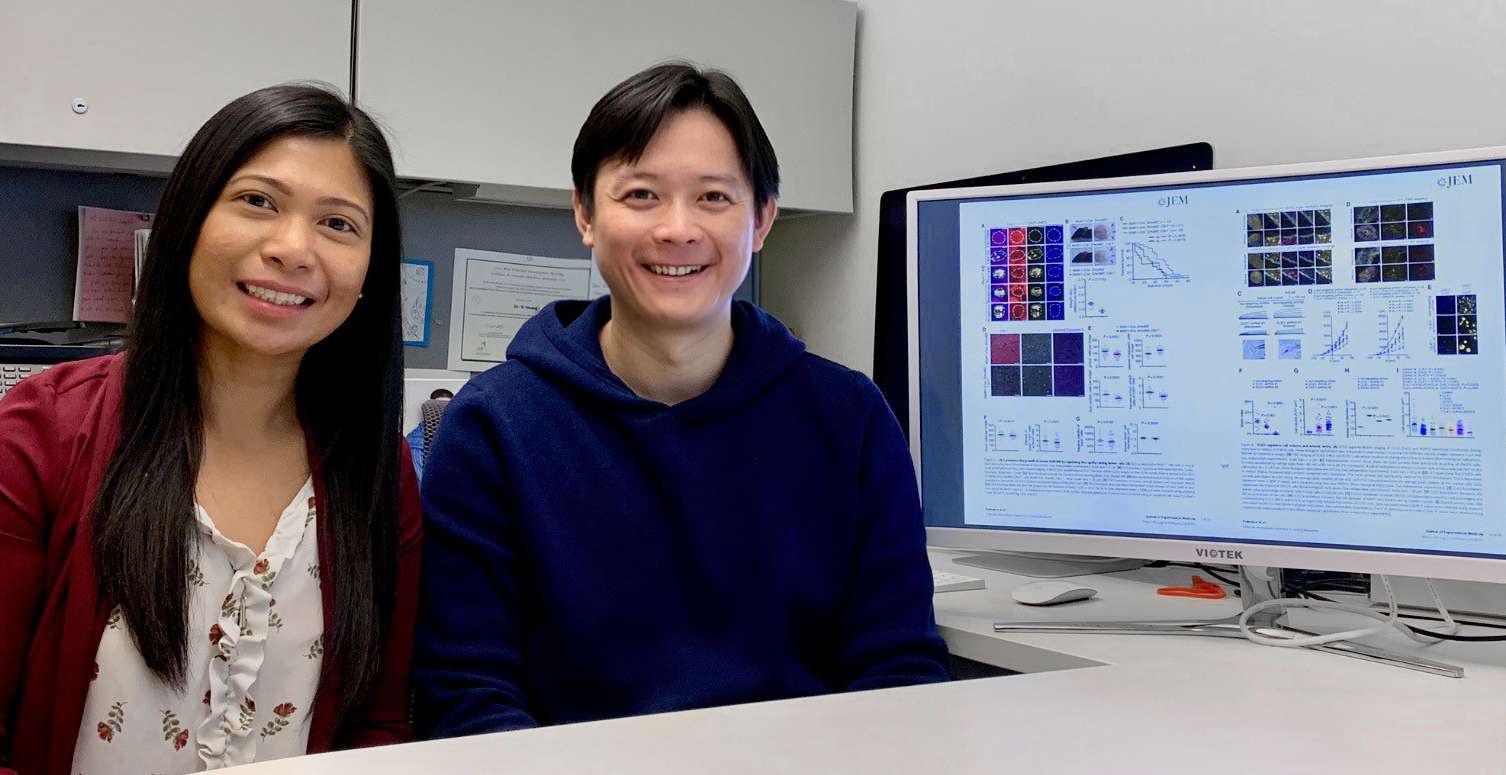Researchers discover that childhood brain cancer could be treated by blocking key cell-surface protein, pointing to a potential treatment approach with fewer toxic side effects
Chemotherapy for children with brain cancer is often toxic, leaving patients with serious life-long side effects but OICR-funded researchers have uncovered a new approach that may help.
In a study published in the Journal of Experimental Medicine, the Ontario-based research team discovered that blocking a specific protein on the surface of brain cancer cells can suppress the rampant growth of a tumour without harming the development of the brain.
The study focused on the protein CLIC1 in medulloblastoma, the most common type of childhood brain cancer. The group found that disrupting CLIC1 can halt medulloblastoma growth with very little effect on the developing brain in mice.
“Brain cancer is the leading cause of cancer-related death in children and young adults,” says Dr. Xi Huang, Scientist in the Developmental & Stem Cell Biology Program at The Hospital for Sick Children (SickKids) and senior author of the study. “We need new treatments to help these patients.”
We believe our findings are significant because ion channels have been successfully targeted to treat numerous human diseases.
Michelle Francisco
CLIC1 belongs to a class of proteins called ion channels, which are important in the development of several other diseases like diabetes, epilepsy and high blood pressure. Many existing drugs and compounds act as ion channel modulators. The Huang Lab now has the high-throughput screening equipment to assess thousands of drug-like chemicals for those that can best block these ion channels.
“We believe our findings are significant because ion channels have been successfully targeted to treat numerous human diseases,” says Michelle Francisco, Research Project Coordinator in the Developmental & Stem Cell Biology Program at SickKids and first author of the study. “This helps pave the way between this discovery today and the impact it can have in the clinic.”
These findings build on Huang’s previous research on the potassium channel EAG2, which – like CLIC1 – is critical to medulloblastoma growth. In partnership with collaborators, Huang has shown that EAG2 could be blocked with an FDA-approved drug for schizophrenia to treat medulloblastoma in experimental mouse models and in a small patient study.
“We are fortunate to work with world-leading brain cancer researchers in Ontario,” Huang says, “We look forward to continuing our research to find new solutions for this devastating disease by targeting ion channels.”
This research was funded by OICR’s Brain Cancer Translational Research Initiative, SickKids Foundation, Arthur and Sonia Labatt Brain Tumour Research Centre, Garron Family Cancer Centre, b.r.a.i.n.child, Meagan’s Walk, Natural Sciences and Engineering Research Council (NSERC) Discovery Grant, U.S. Department of Defense (DoD) Peer Reviewed Cancer Research Program Career Development Award, Canadian Institute of Health Research (CIHR) Project Grants, and Sontag Foundation Distinguished Scientist Award to Xi Huang.

